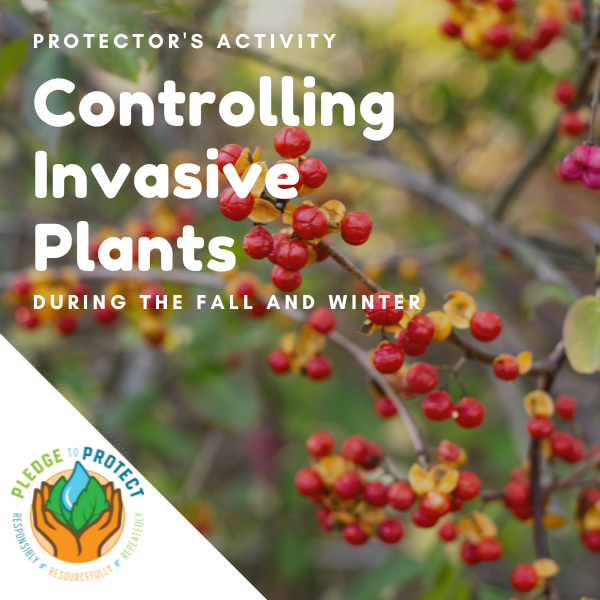Fall and winter are ideal seasons to control invasive shrubs. During these seasons, plants switch from drawing nutrients to their leaves and start drawing nutrients to their roots as part of the senescence process. This switch in energy storage makes it an ideal time to apply herbicides because the plant will naturally draw the chemical to its roots.
Below you will learn removal & disposal methods and quick identification tips for a few invasive woody plants you may encounter in your yard or community.
Controlling Invasive Woolly Plants
The control methods below are suggested for small populations of invasive woody plants.
Manual Removal: Plants less than 3/8 inch diameter can be removed by hand. A Root Talon can be used to remove plants too large to hand pull.
Cut & Bag Treatment: Cut truck/stems 6inches above the ground to leave room for a non-transparent black colored plastic bag to be zip-tied to the stump. Be sure to dig down around the stump and cover the bottom of the bag with soil to secure it.
Cut Stump Treatment: Cut trunk/stems near the soil and immediately apply glyphosate or triclopyr to the exposed vascular tissue using a paintbrush.**This technique is best practiced in the fall. Always follow chemical labels and wear protective gear.
Disposal Guidelines
- Do not compost actively flowering or fruiting plants or bring to a transfer station that may compost the material.
- To reduce the chance of spreading, it is best to chip or burn removed stumps and debris on site.
- Be sure to remove any fallen fruits to avoid repopulating the treatment site. Laying a large tarp down to catch falling fruit at the removal site can be helpful.
- Vines that are tightly wrapped around the tree or located in the tree canopy should be cut at the base, left on the tree, and will eventually dry up and fall apart.
- View a full document of disposal guidelines.
Keep a Look-Out for These Invasive Plants

- Easiest to identify from late September-early November when the fruit is visible.
- Blue-purple-colored berries with a speckled porcelain-like shine.
- The Center of woody stems (pith) is white.
- The bark does not peel.

- Easiest to identify during the fall when the fruit is visible.
- Fruit with yellow capsules.
- Fruit growing along the stem (axillary fruit).

- Easily Identifiable year-round.
- Holds leaves through the fall with an early spring leaf-out.
- Orange-colored sapwood.
- Distinctive thorns along the branches and terminal buds.
- Elongated dark brown buds.


